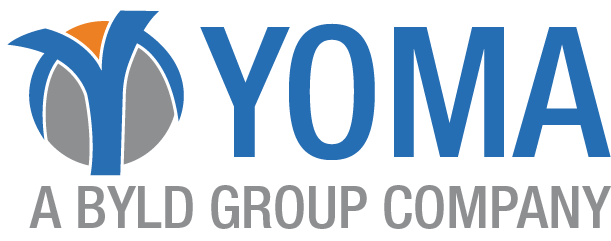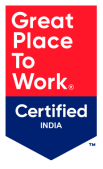Article Content
Introduction
Organizations that want to survive and grow in the always – changing corporate scene of today must remain agile. Manpower planning is an important tactic that allows this agility. Long-term success in both managing a worldwide company and a startup depends on your knowledge of manpower planning. We shall discuss what manpower planning is, its relevance, its process, and its advantages in this blog. We will also discuss the several forms of manpower planning and their importance in general HR.
Manpower Planning: What is it?
Manpower planning, sometimes referred to as workforce planning or human resource planning, is the strategic process of projecting future human resource needs of an organization and guaranteeing that, when needed, the appropriate number of people with the appropriate skills are ready. It all comes down to matching labor supply and demand to corporate objectives.
Manpower planning goes beyond simply filling positions to include skill shortages, retirement or resignation prediction, and preparation for expansion prospects. Any successful human resource management plan is essentially based on its pulse.
The Importance of Manpower Planning
One cannot stress the need of manpower planning in contemporary corporate environments. Here are some justifications for:
1. Aligns staff with corporate objectives.
Every company sets long-term objectives. By matching recruitment and training initiatives, manpower planning guarantees that the workforce is ready and qualified to help those goals.
2. Lessens operational interruptions
Imagine a critical team short-staffed during a product introduction. Good HRM personnel planning guarantees that such gaps never exist.
3. Reduces Employment Expenses
Under pressure, hiring sometimes results in inadequate quality or overspending. By approaching their workforce planning strategically instead of reacting in crisis mode, businesses can lower hiring expenses.
4. Raises Employee Satisfaction
Employees feel more appreciated and motivated when job distribution is ideal and career development is encouraged. Among the several subtle ways manpower planning supports retention is this one.
5. Improves HRM Approaches
Manpower planning in HRM is a driving force behind good HRM strategies and not just a support tool. It guides choices on succession planning, development, and staffing.
Read More – Planning your Human Resource is Essential for Effective Management
Process of Manpower Planning
Having established the value and several forms of manpower planning, let us now dissect the real process. Though organizational needs will affect the steps, usually they consist of:
1. Examining Corporate Goals
Understanding the short-term and long-term objectives of the company marks the first step in manpower planning. These goals determine the kind and quantity of workers the business will need. Refer to McKinsey’s approach to organizational planning for more on this.
2. Estimating Human Resource Demand
HRM experts project here the number of staff required and the required skills to satisfy future needs. Forecasting is accomplished with reference to strategic goals, market trends, and past performance.
3. Evaluating Current Manpower Availability
A current employee analysis reveals performance levels, competencies, and skill set availability. Finding the differences between present and future needs depends on this crucial stage.
4. Pointing Up Weaknesses
Demand projections and current evaluations in hand help HR find workforce shortages or surpluses. This guides decisions about whether to reorganize, retrain, or recruit.
5. Establishing Manpower Strategies
The gap analysis will determine whether HRM advises internal transfers, upskilling, hiring, or even automation. Manpower planning in HRM is about maximizing current talent as much as numbers.
6. Execution
Strategies have to be implemented once they are created. This covers policy changes, job advertising, recruiting campaigns, and training courses.
7. Watching and Assessing
Manpower planning is not a one-time event. Constant monitoring guarantees that plans match changing corporate needs. Feedback loops help to improve next cycles of planning.
Advantages of manpower planning
Good manpower planning offers many different advantages. Let’s examine the benefits at both the organizational and employee levels.
Organization Advantages
- Best Use of Resources: Steer clear of understaffing or overstaffing.
- Enhanced Productivity: Placing the right people in the right roles naturally boosts productivity and morale.
- Cost Savings: Anticipating future needs helps one avoid last-minute hiring and so lowers costs.
- Strategic Agility: With a flexible workforce, the company can react faster to changes in the market, thus promoting strategic agility.
- Enhanced Compliance: Well-documented strategies facilitate meeting of legal and regulatory criteria.
Employee Benefits:
- Career Development: Employees have more chances for development when they are part of upcoming strategies.
- Workload Balance: Better planning helps to avoid burnout and raises morale by balancing workload.
- Job Security: An organization that is future-ready and well-staffed encourages stability and confidence among its staff.
Manpower planning in HRM supports employee well-being as well as business health.
Difficulties in Manpower Planning
Although the benefits are rather significant, manpower planning presents certain difficulties:
- Dynamic Market Conditions: Quickly obsolete forecasts can result from fast changes in consumer behavior or technology.
- Talent Shortages: When the appropriate talent isn’t on the market, even the best of ideas can fall short.
- Internal Resistance: Managers or departments may occasionally object to HRM’s recommended staffing changes.
- Data Inaccuracy: Outdated or faulty data can ruin efforts at planning.
Overcoming these challenges requires collaboration, accurate data, and executive support.
Read More – Importance of Staffing: Definition, Features and More
Including Technology in Manpower Planning
Modern human resource management depends much on technology to improve personnel planning. Workforce management systems, HR analytics tools, and artificial intelligence-driven forecasting tools speed up and more precisely plan.
From workforce scenario simulation to attrition prediction, tech-enabled manpower planning in HRM helps to make better, data-based decisions. Keeping ahead in the era of digital transformation requires using the correct instruments.
Conclusion
Manpower planning goes much beyond merely covering vacancies. Ensuring that companies have the right people with the right skills at the right moment is a pillar of human resource management and essential. Whether your company is facing long-term strategic development or short-term needs, manpower planning in HRM is essential for enabling corporate success.
Organizations can give their workforce a real competitive advantage by knowing the several forms of manpower planning, following a defined process, and appreciating the advantages.
Manpower planning is not a choice for any company that is serious about growing, remaining relevant, and developing talent; it is rather a need.










